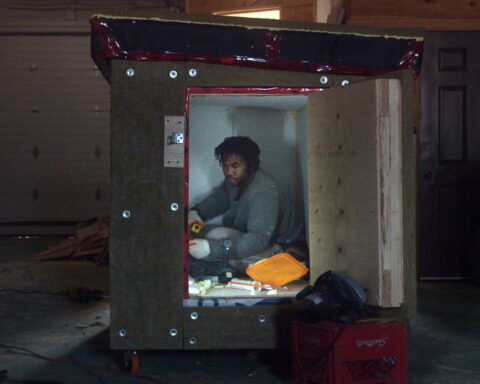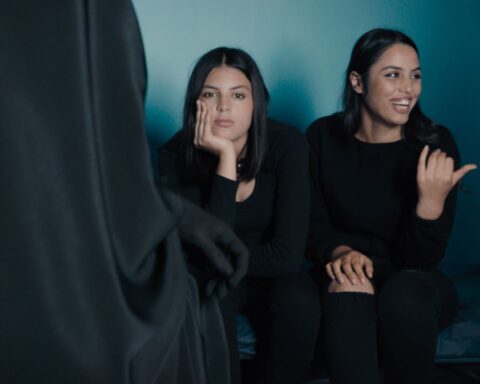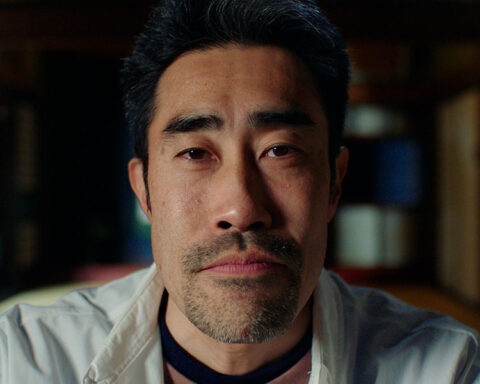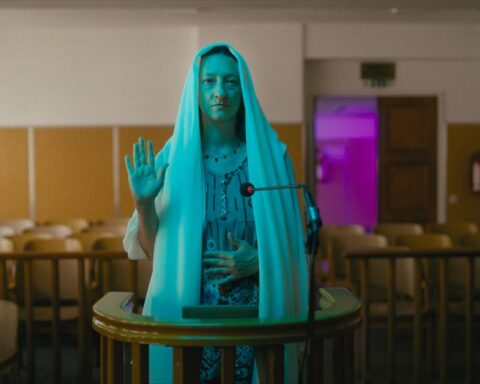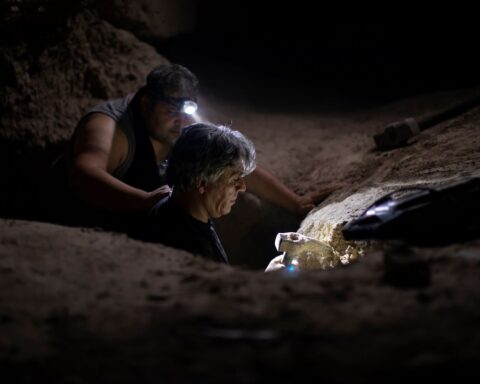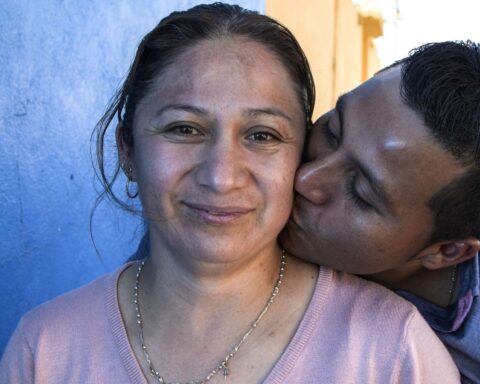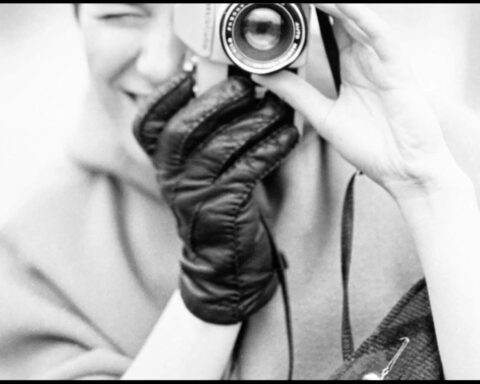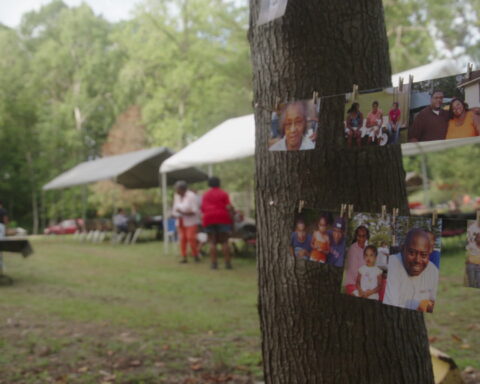There’s something incongruous about discussing the best film of 2005 with two of the world’s finest directors while being bombarded with easy listening music at high volume. Sunk into a couch in a hotel bar in downtown Toronto, their unfailing friendliness and sartorial elegance concealing their fatigue from a trans-Atlantic flight and a full day of interviews, Luc and Jean-Pierre Dardenne accept this latest imposition with wry grace. “‘If You Don’t Know Me By Now’,” says Luc in careful, heavily accented English. A pause, searching for le mot juste: “Bad song.”
Such are the travails of the festival circuit. Since last July, the Belgian brothers have been traveling with their new film L’Enfant, which deservedly took the Palme d’Or at last year’s Cannes Film Festival. It tells the story of two young, destitute lovers, Bruno (Jérémie Renier) and Sonia (Deborah Francois), and what transpires when the enterprising Bruno impulsively decides to sell their newborn baby for black market adoption. L’Enfant’s gritty, bleak setting, handheld camerawork and unglamorous, subprole characters will be familiar to anyone who has seen the Dardennes’ previous features: La Promesse (1996), which also featured Renier; Rosetta (1999), which garnered them their first Palme d’Or as well as an acting prize for star Emilie Dequenne; and Le Fils (2002), for which Olivier Gourmet was awarded best actor by the Cannes jury.
At this point, the pair are getting to be fixtures at Cannes’ Palais, which perhaps explains why their Palme win for L’Enfant was greeted with a palpable shrug from the jaded press corps. When excellence becomes familiar, it’s the familiarity that sticks: “same old thing” was the cautiously alluded to, though never explicitly stated, consensus. Although they’re obviously happy to keep their Palme d’Or, the brothers would not disagree with that assessment. But as they’re more interested in deepening their art than catering to the whims of fashion, their way of phrasing it is slightly, and crucially, different. “It’s always the same thing,” says Luc of their films, “but it’s always specific.”
Though now firmly cemented among international cinema’s elite narrative filmmakers, the Dardennes’ late-career breakthrough has largely obscured their long history as documentarians. As with their features, these early documentaries, which will be unveiled for the first time in North America as part of a Cinematheque Ontario retrospective this spring, are rooted in the political and social struggles that marked their hometown of Seraing. The massive workers’ strike of 1960, a milestone of working-class defiance in the face of a dying economy, is the subject of 1979’s When the Boat of Leon M. Went Down the Meuse River For the First Time, which follows a foundry man on a nautical voyage of remembrance. For the War To End, The Walls Should Have Crumbled (1980) also deals with the memory of the strike, but with a focus on the role of the media in political discourse and the raising of political consciousness.
This expanded frame indicates the Dardennes’ ability to encompass the true enormity of their subjects while never leaving ground zero; by exploring the local communities which they know so well, they are able to forge connections with wider struggles, each linked to the other even in their own particularity. Lessons From a University on the Fly (1981) examines the impact of Communist rule on the lives of Polish exiles living in Seraing. R…No Longer Answers (1982) sketches the numerous vocations and modes of life linked by the transmissions from an international free radio service. Most pertinently, perhaps, 1983’s Look at Jonathan (Jean Louvet, His Work) is a tribute to the titular playwright, whose fierce political commitment found expression in the powerfully personal, idiosyncratic formalism of his work.
That same exceedingly delicate combination, which today the Dardennes effect with such breathtaking elegance, was arrived at only by years of effort. Unhappy with the conventionally melodramatic narrative of their first feature, 1992’s Je Pense à Vous (which will also receive its Toronto premiere as part of the retrospective), the Dardennes’ return to a documentary aesthetic in La Promesse belied the transformative effect they had wrought upon their cinematic language. The feeling of spontaneous immediacy which they so expertly capture is arrived at only by the most precise, meticulous preparation. By stripping stories to their absolute essentials—the sheer mechanics of cause and effect, action and consequence—the Dardennes have created films of almost boundless implication and emotional generosity. As Rosetta, Le Fils and now L’Enfant further their development as perhaps the premiere narrative filmmakers of our time, it feels ever more pertinent to query the Dardennes about the balance they strike between verity and invention.
“It’s true that we always try to recreate a situation in which one could film a documentary,” says Luc, who is, at age 51, three years younger than his brother and easily the more gregarious of the two. “We like to work under duress, with constraints around us. If we have too much freedom, we panic! We like to organize our constraints, but even though we organize them, we do so to give the impression that things are happening without us, in spite of us.”
“I don’t know how we manage to strike this balance, or whether we have managed,” adds Jean-Pierre. “But it’s true that this is what we try to do. For instance, in [L’Enfant] we felt that we had to stop the story with the child-selling network, because it was starting to become a story about Bruno from the outside. We wanted Bruno’s movements to come from inside, in reaction to things happening around him. The problem is that if the story develops too much, it starts leading the characters. Often the story is too developed, so we try to take away from things. We trust the characters more when we start working with the actors, because they exist.”
“You don’t want your characters to be shut in,” concurs Luc. “When you have these long shots [in the films], even though they’re within a determined structure, they can breathe.” He pauses and reflects for a moment. “Maybe it’s working to make things remain fragile,” he resumes. “We should be able to say at the end of the film that everything was fragile, that it hung by a thread, that it could have collapsed.”
That fragility, though, proceeds from a strong foundation. The Dardennes’ documentary heritage is evident in every frame of their films, but they prove surprisingly reticent in discussing how that aesthetic has informed the making of their fictions. When it is suggested that a possible inspiration for L’Enfant came from the Belgian documentary Gigi, Monica… and Bianca (1997), about a pair of teenagers struggling with parenthood, Luc responds with a smile. “Of course we have seen that film—we are the producers of that film! It’s true, the similarities, but you couldn’t say that our film is a follow- up. But yes, we were touched by that film, the way that they played in the street and gave each other punches.”
This attention to gestures, to the way their characters move and interact with people and things, is both the Dardennes’ inheritance from documentary and their point of departure. From observation comes the means to construct the fiction, to deepen that surface reality. “It’s true that depth emerges through concrete things and gestures,” says Luc. “The time we take in filming a gesture with a prop and repeating these gestures over and over again… those are the only things that enable us to identify the characters: the objects around them, and the gestures that they have.”
Identification, however, is only one aspect of narrative, as Jean-Pierre notes. “I think that in fiction, you get into the intimacy of the characters. You can work with their inner movements, whether guilt, or shame. In a documentary, you will not be able to touch on [those things].” And it’s from those inner movements that the outer reality is returned to, social, economic and political realities given shape and meaning by the veracity of the characters: “When we start thinking of the films, we never think about this or that social aspect. We say, ‘okay, we have this man who is 20, and this woman who is 17, so how can this boy become a father? How can he love this child in the manner in which he’s living?’ These are the important questions for us.”
The key dramatic question in L’Enfant is whether Bruno will be able to redeem himself for his shocking transgression. Forgiveness is a recurring theme in the Dardennes’ films: Rosetta builds towards a startling betrayal before concluding with a beautifully ambiguous moment of reconciliation, while Le Fils pivots on an almost superhuman gesture of empathy. One of the reasons we’re able to even conceive of forgiving Bruno is that he’s so clearly a product of a literally materialistic environment. For him, selling his child is no more than a financial transaction born from daily need. When he tells a stricken Sonia that she’ll be able to have another child later, it’s both viciously insensitive and completely understandable in terms of his live-in-the-present philosophy.
For Bruno, things and situations are defined by their immediate usefulness and material worth, a philosophy that, allowing for a moral leap, also extends to the Dardennes themselves. Their films are littered with significant props—a perpetually bleating cell phone and a cumbersome pram play major roles in _L’Enfant_—but their symbolic weight is dependent on their functional virtues. “They always have to be useful,” says Jean-Pierre of these mundane but indelible objects. “Materially useful. They are necessities. If the character has a cup, he should use it. It must be necessary. And the way we come back to that cup later in the story will give that prop another meaning. They shouldn’t just be symbols; they must remain on that material level, that useful level.”
Just as the Dardennes are tied to objects, they are also bound to their surroundings. Like its predecessors, L’Enfant unfolds against the dull, industrialized backdrop of the town of Seraing. While their films probably haven’t done much for Belgium’s tourist industry—the run-down waffle stand that figures so prominently in Rosetta seems almost like a rueful cultural joke—the brothers’ insistence on depicting their country’s marginalized residents places them within a long-standing cinematic tradition of social realism.
In the same way that Bruno and Sonia’s despair is informed by their dire circumstances, so too is the possibility of their reunion dependent on their acknowledgment of mutual dependence. This sentiment is of course not exclusive to Belgium, which is why the Dardennes’ minutely specific films have such a universal appeal, a true resonance that is not to be confused with the blandly homogenized quality of so many “accessible” art house hits. “Look at Faulkner,” says Jean-Pierre. “He invented a country. It’s a made-up country you could read about in Belgium, or Australia, or here [in Toronto].”
This understanding of how art can transcend the idea of borders is probably why the Dardennes have never yet considered switching locations, even when they’ve contemplated adapting someone else’s work. Last year, in an interview with Cinema Scope, the pair revealed that they had thought about adapting Dennis Lehane’s Mystic River and relocating it to Seraing. While demurring that “that was more a bar conversation than anything else,” the suggestion is not so improbable. Clint Eastwood’s staunchly classical take on the same material does not end its possibilities, and in the hands of the Dardennes, so adept at dramatizing filial struggle, the universality would have been reincarnated in a new specificity. “We tell the stories of the families of Seraing,” says Jean-Pierre, simply. “These are family stories.”
“Look at the starting point of our culture, Greek tragedy and the Bible: these are all family stories,” continues Luc. “And family is always specific. It’s like Tolstoy said, ‘all happy families are alike; all unhappy families are unhappy in their own way.’” Which gives the lie to those who say the Dardennes are merely repeating themselves. La Promesse and Le Fils were paternal pathos plays; Rosetta detailed a difficult mother-daughter relationship; L’Enfant is the first of their films with a conventional (if severely violated) family dynamic. This progression is not incidental. For the Dardennes, seemingly simple questions carry deep, fundamental significance.
“We would like maybe to see how to film a group,” says Jean-Pierre. “With Rosetta or Le Fils, the camera follows [a single] character. If we had a group, how would we go about it—filming people who are in the same room at the same time?” It hardly sounds like a major stylistic upheaval, but the Dardennes have always mined such apparently trivial details to discover the very soul of their films.
Although they don’t anticipate a return to documentary filmmaking, the Dardennes have lent their imprimaturs to several non-fiction films as producers, including 2000’s La Deviniere, a raw investigation of a psychiatric hospital directed by their long-time camera operator Benoit Derveaux, and 2002’s Brook By Brook, a portrait of renowned stage director Peter Brook by his son, Simon. As for revealing their follow-up to L’Enfant, the brothers say that they’ve been too busy to really think about it. “Time will tell,” says Luc. The same can be said of their films: their finely wrought immediacy ensures their permanence.




